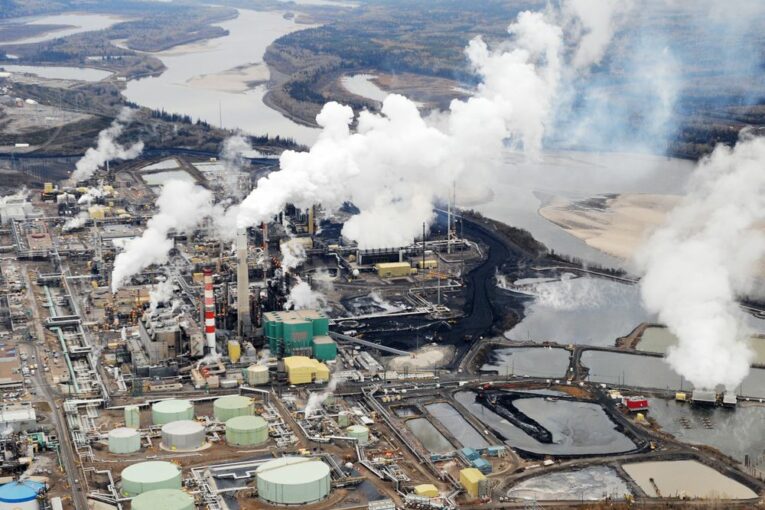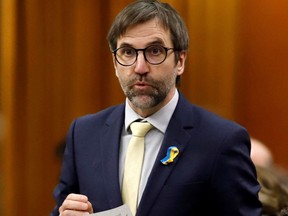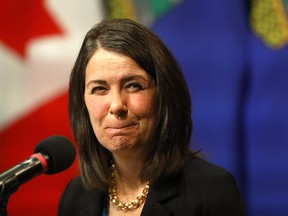
It’s hard to know exactly where Danielle Smith’s government is headed when it comes to putting all the jigsaw pieces together on the climate and energy policy puzzle.
The UCP government is about to create its own “made-in-Alberta” climate strategy.
Yet, it just agreed to meet Ottawa’s requirement to enhance the Alberta Technology Innovation and Emissions Reduction (TIER) program to meet federal equivalency requirements.
And while precise details are still unclear, the Trudeau government previously spelled out that the benchmark carbon price each province has to meet is rising to $65 a tonne next year — up from $50 — and will ultimately climb to $170 by the end of the decade.
Meanwhile, it’s still uncertain if Alberta will officially adopt a net-zero target by 2050 — or a 2030 goal — as part of its new overall climate plan.
Confused? Welcome to the club.
On Friday, the premier was speaking to the Calgary Chamber of Commerce and spelled out her opposition to a retail carbon tax from Ottawa that hits consumers in the pocketbook.
She vowed to continue “fighting that out” with the feds, although the province failed last year at the Supreme Court of Canada to stop the national carbon price.
Her view on the industrial carbon pricing program in Alberta, better known as TIER, is different.
Recommended from Editorial
-

Oilsands exploring nuclear power as ‘net zero changes everything’
-

Varcoe: Canada’s energy sector sets sights on net-zero oilsands and LNG to secure future
-

Ottawa to impose federal carbon fuel charge on three new Atlantic provinces
“We’ve been wanting to build on what we have with the TIER pricing, in order to make sure that we continue to occupy that constitutional space,” she said.
“And we do know that’s one of the big fights that we’re having with Ottawa right now. We hope that we will make some headway.”
On Tuesday, the headway paid off.
The federal government announced it reached agreements with most provinces, including Alberta, to grant equivalency agreements to their carbon pricing systems for industrial emissions until 2030, although Ottawa left it up to the provinces to announce the details.
On the consumer front, however, the federal “backstop” carbon price on fuel will remain in place in Alberta. Individuals will receive quarterly payments from the federal government, while the higher carbon tax will add another 3.3 cents per litre to the price of regular gasoline next year.

At a news conference, federal Environment Minister Steven Guilbeault praised the province, saying he wanted to “applaud Alberta for their strengthened plan” on industrial emissions pricing, noting it’s driving one of the most vibrant markets for clean energy investment in the country.
And while he’s now facing political heat for imposing the national carbon fuel charge on three Atlantic provinces on July 1, Guilbeault noted he was able to reach deals with two Prairie provinces on industrial pricing.
“I am not super popular in Alberta or Saskatchewan, I can tell you that. And yet, we were able quickly to come to agreement with these provinces,” he said.
“They really wanted to ensure that they could have their own system and work toward attaining that objective. And that happened.”
And what did Alberta and Ottawa agree to?
The TIER program requires regulated large industrial facilities to lower the emissions intensity from their historical performance, either under a facility-specific benchmark, or from the level of top-performing facilities within their industry.
Facilities that outperform their requirements can generate credits.
Those that don’t meet the mark can purchase offsets or pay into the TIER fund at a level of $50 per tonne of carbon dioxide equivalent this year.
Industry and environmental groups welcomed Tuesday’s announcement, as they’ve been waiting for clarity on the future of TIER and where industrial carbon pricing is going — and how it will affect investment.
“It does remove uncertainty,” said Tristan Goodman, president of the Explorers and Producers Association of Canada.
“Carbon pricing is always challenging for everyone to manage, but when the federal government allows flexibility for each province, it’s very positive.”
Scott Crockatt of the Business Council of Alberta called the news constructive, saying Tuesday’s agreement will let the province decide where to best spend money collected through the program, such as investing in innovation.
Simon Dyer, deputy executive director of the Pembina Institute, said the announcement is positive, as it suggests Alberta agreed to strengthen its industrial carbon price, although he wants to see the nitty-gritty details.
It seems like the federal and provincial governments are getting along, at least on the TIER issue.
But what about adopting a net-zero emissions target by 2050, mirroring the federal target?
In an interview Friday, I asked Smith if the province will adopt a net-zero goal.

“We’re already seeing our big industry developing the target of carbon neutrality and we’re going to support that,” she said.
With a deal on TIER in place, the next big puzzle piece surrounds the province’s new climate plan.
Environment Minister Sonya Savage, who recently returned from the COP27 climate summit, noted developing the strategy is one of the top priorities in her new mandate letter.
And will the plan have actual targets in place to reduce emissions?
Savage said she couldn’t say yet, as the plan has to go through a process, including holding consultations with industry, environmental organizations and academics.
“You can’t put the cart before the horse until you do the consultation . . . Because one thing (is) for sure — it doesn’t do anybody any good to commit to targets and time frames that you can’t achieve,” she said.
“So it’s too early to say.”
Whatever the plan includes, it needs to be comprehensive as Alberta has the highest overall emissions among the provinces, said Dyer.
“To be seen as credible on climate change, there’s a need for a 2030 target and a 2050 target — and policies and procedures that need to get you there,” he added.
“Alberta is late to the party on having a climate plan.”
Chris Varcoe is a Calgary Herald columnist.
You can read more of the news on source
